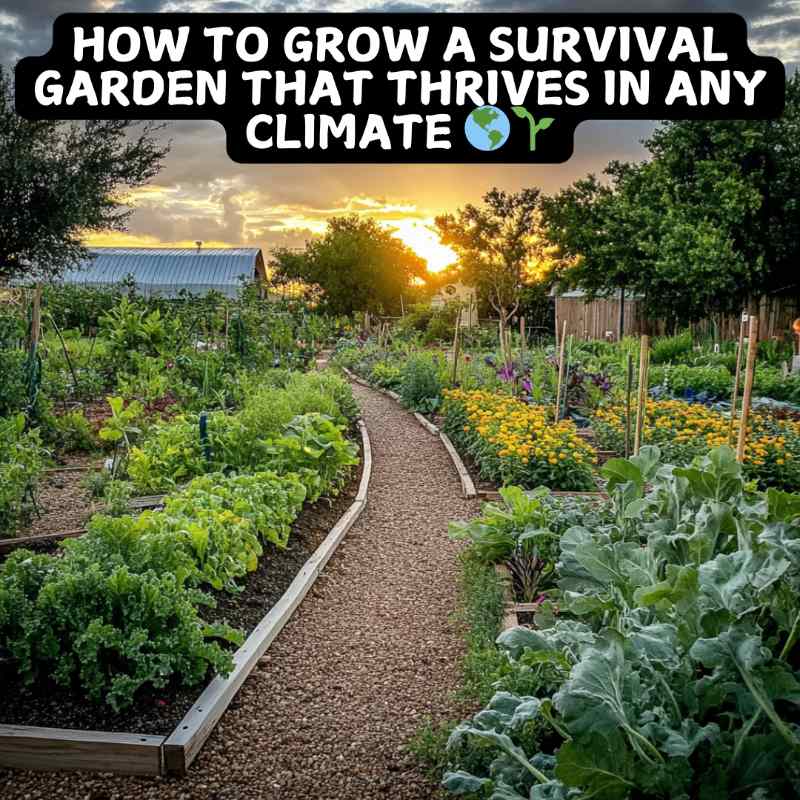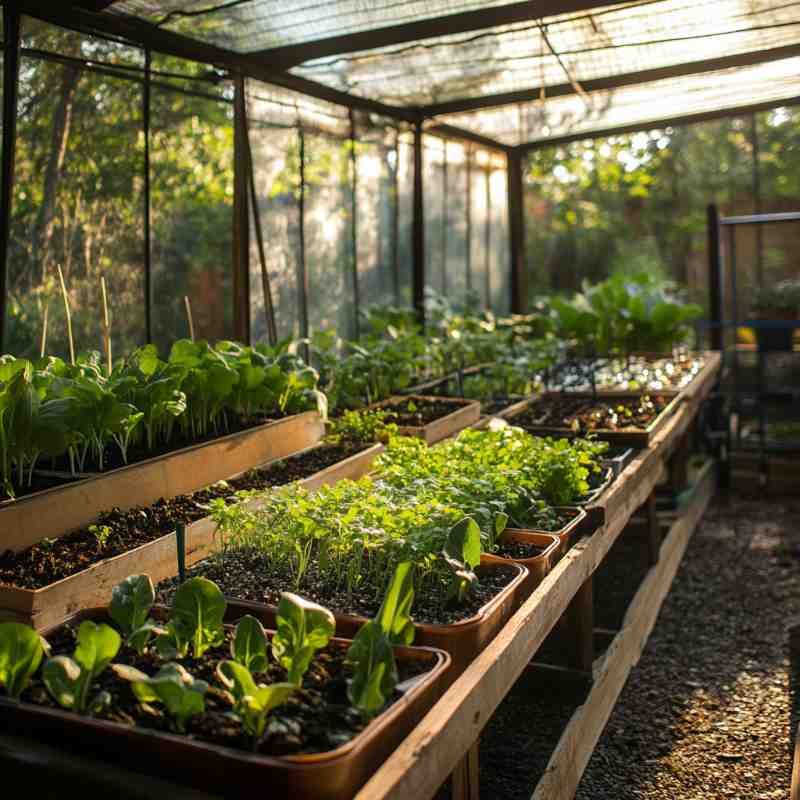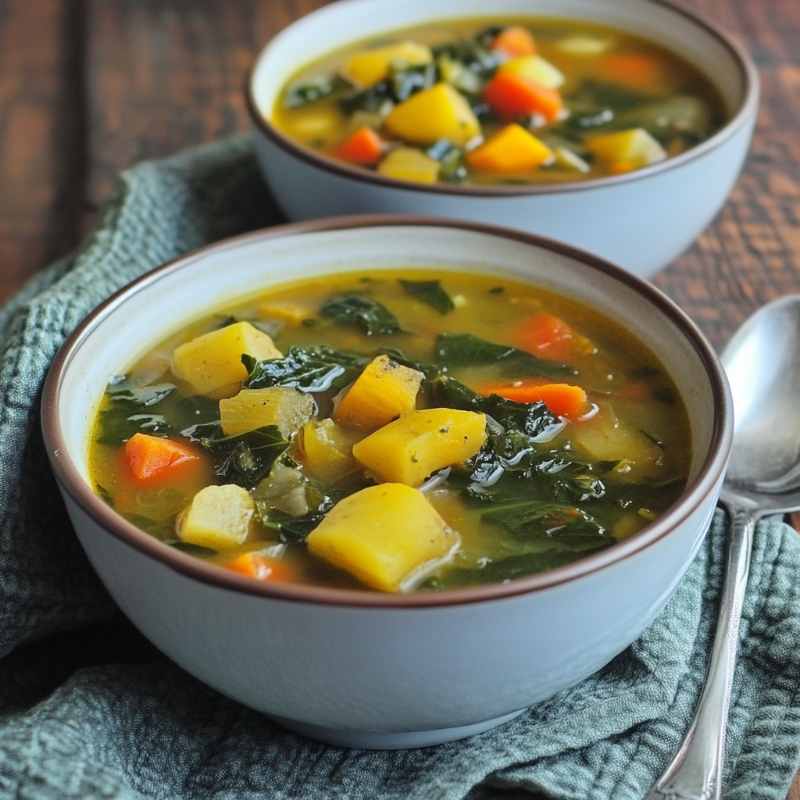How to Grow a Survival Garden That Thrives in Any Climate 🌎🌱

🌱 If the grocery stores shut down tomorrow, would you be ready?
Imagine a world where food shortages hit overnight. Supermarket shelves are empty, and panic sets in. Would you have the means to feed yourself and your family? A survival garden ensures that, no matter what happens, you have fresh, nutrient-dense food at your fingertips. Best of all, you can grow one ANYWHERE—whether you live in a snowy region, a desert, or a humid jungle! 🌎💪
In this guide, you’ll learn how to create a thriving survival garden in any climate with hardy crops, space-saving techniques, and essential survival tips. Let’s dig in! 🏡🌱
🌍 Choosing the Best Survival Crops for Any Climate
A true survival garden must be reliable, nutrient-packed, and capable of growing in extreme conditions. Here’s a breakdown of top survival crops by climate:
🏔️ Cold Climates (Snow, Frost, Short Growing Season)
- Kale 🥬 – Frost-hardy and nutrient-dense.
- Carrots 🥕 – Can be grown under mulch in freezing weather.
- Garlic 🧄 – Plant in the fall and harvest in summer.
- Potatoes 🥔 – Thrives in cool soil; stores well.
- Cabbage – Tough against frost and provides long-lasting harvests.
🌵 Hot, Dry Climates (Desert, Drought-Prone)
- Sweet potatoes 🍠 – Drought-resistant and calorie-dense.
- Okra 🌿 – Loves heat and thrives in poor soil.
- Amaranth 🌾 – High in protein and tolerates dry conditions.
- Cowpeas (Black-eyed peas) 🌱 – Thrives in arid environments.
- Chia seeds – Hardy and packed with nutrients.
🌧️ Humid Climates (Tropical, Heavy Rainfall)
- Cassava (Yuca) 🍠 – Tolerates wet soil and provides a calorie-rich root.
- Bananas 🍌 – A fast-growing, high-yield fruit.
- Taro – Grows in wet soil and provides filling starch.
- Yardlong beans – Loves heat and humidity.
- Malabar spinach – Thrives in wet, hot climates and provides leafy greens.
Pro Tip: Grow perennials (plants that come back every year) to reduce labor and increase food security. Examples: asparagus, fruit trees, and herbs like rosemary and thyme. 🍃

🏡 Space-Saving Survival Garden Techniques
Short on space? No problem! These techniques maximize food production in small areas:
✅ Vertical Gardening – Grow vining crops like cucumbers, tomatoes, and beans upwards using trellises or walls. ✅ Container Gardening – Use buckets, tubs, or raised beds to grow food on balconies or patios. ✅ Companion Planting – Pair plants together to deter pests and boost growth (e.g., planting basil near tomatoes enhances flavor and repels insects). ✅ Hugelkultur Beds – Raised garden beds filled with wood logs, which retain water and reduce watering needs. ✅ Indoor Sprouting & Microgreens – Grow nutritious greens inside in just 7-10 days—even without sunlight! 🌱
🍲 Simple Survival Garden Recipe: Wild Greens & Root Veggie Soup 🥣
A nutrient-packed soup using ingredients you can grow year-round!
Ingredients:
- 2 cups kale, spinach, or wild greens
- 2 carrots, diced
- 2 potatoes, cubed
- 3 cloves garlic, minced
- 1 small onion, chopped
- 6 cups water or bone broth
- 1 tsp salt (or to taste)
- ½ tsp black pepper
- 1 tbsp olive oil
Instructions:
- Heat olive oil in a pot over medium heat. Add onions and garlic, and sauté until fragrant.
- Add carrots and potatoes. Cook for 5 minutes, stirring occasionally.
- Pour in water/broth and bring to a boil.
- Reduce heat and simmer for 20 minutes or until veggies are tender.
- Stir in greens and let them wilt for 2-3 minutes.
- Season with salt and pepper. Serve hot! 🍜🔥

❓ Common Questions About Survival Gardening
1. Can I grow food in an apartment or urban setting?
Yes! Use container gardening, vertical planters, and hydroponics to maximize small spaces. Grow microgreens indoors for fast, nutritious harvests! 🏙️🌿
2. How do I keep my survival garden pest-free without chemicals?
Try companion planting (like marigolds to repel insects), homemade sprays (neem oil, garlic spray), and attracting beneficial insects (ladybugs, praying mantises). 🐞🌸
3. What’s the easiest survival crop for beginners?
Potatoes, kale, and beans are nearly foolproof! They grow in most conditions and require little maintenance. 🥔🌱
4. How do I store my harvest for long-term survival?
Dehydrate, freeze, or can your produce! Root veggies store well in cool, dark places. Fermenting foods also extends shelf life while adding probiotics! 🥫🧊
5. How much space do I need to feed my family?
A well-planned 1000 sq. ft. garden can provide food for a small family. Even 100 sq. ft. can supplement your diet significantly! 📏🌾
🌱 Start Your Survival Garden Today!
No matter where you live, you CAN grow your own food! Start with easy crops, use smart gardening techniques, and stay prepared for anything. A survival garden isn’t just a hobby—it’s a lifesaving skill. 🌍💪
Will you start your survival garden this year? Drop a comment and let’s talk! ⬇️🔥